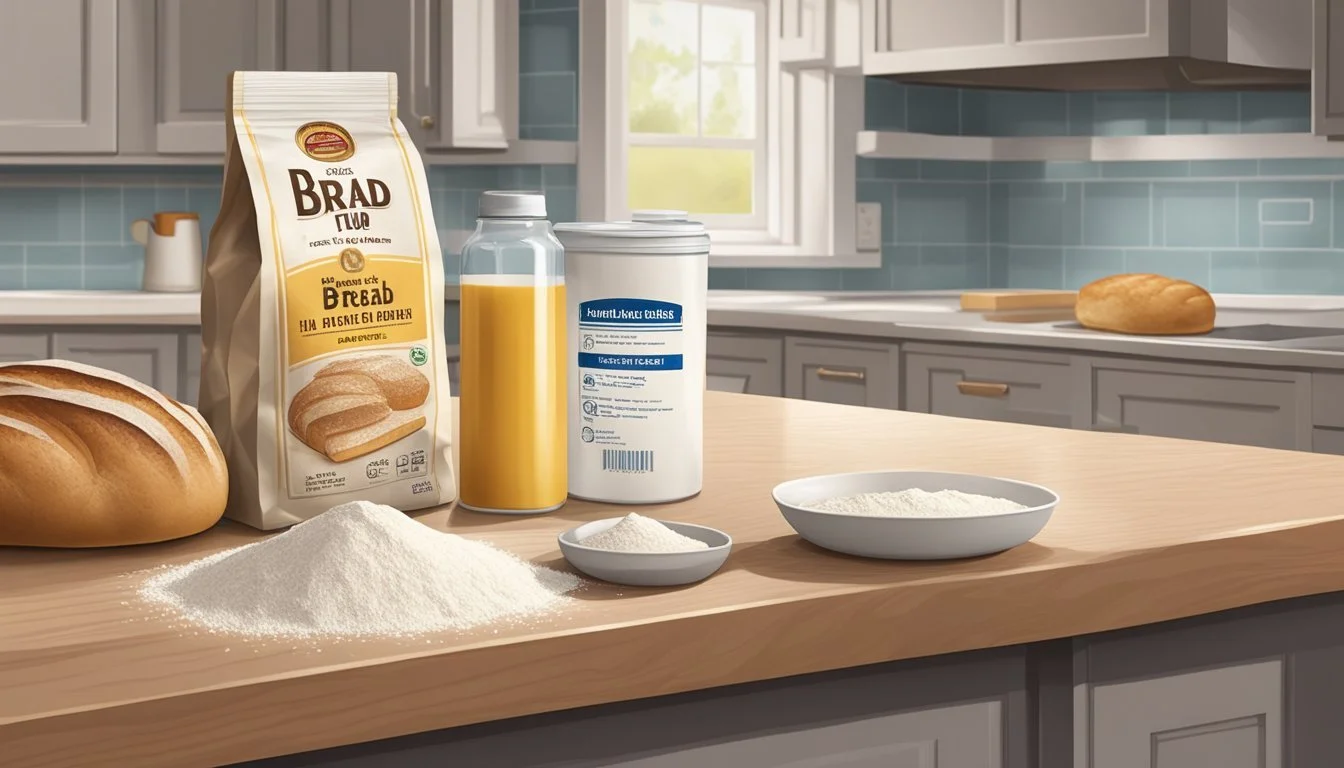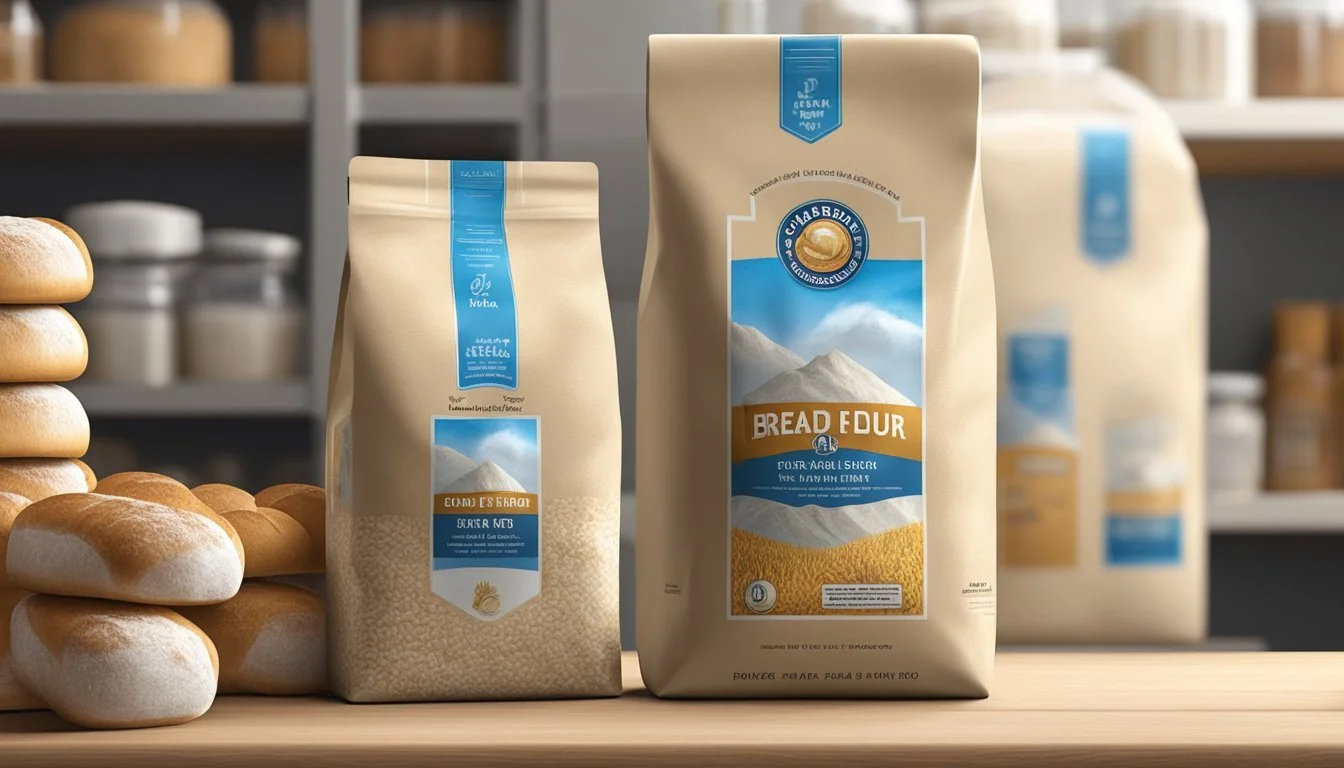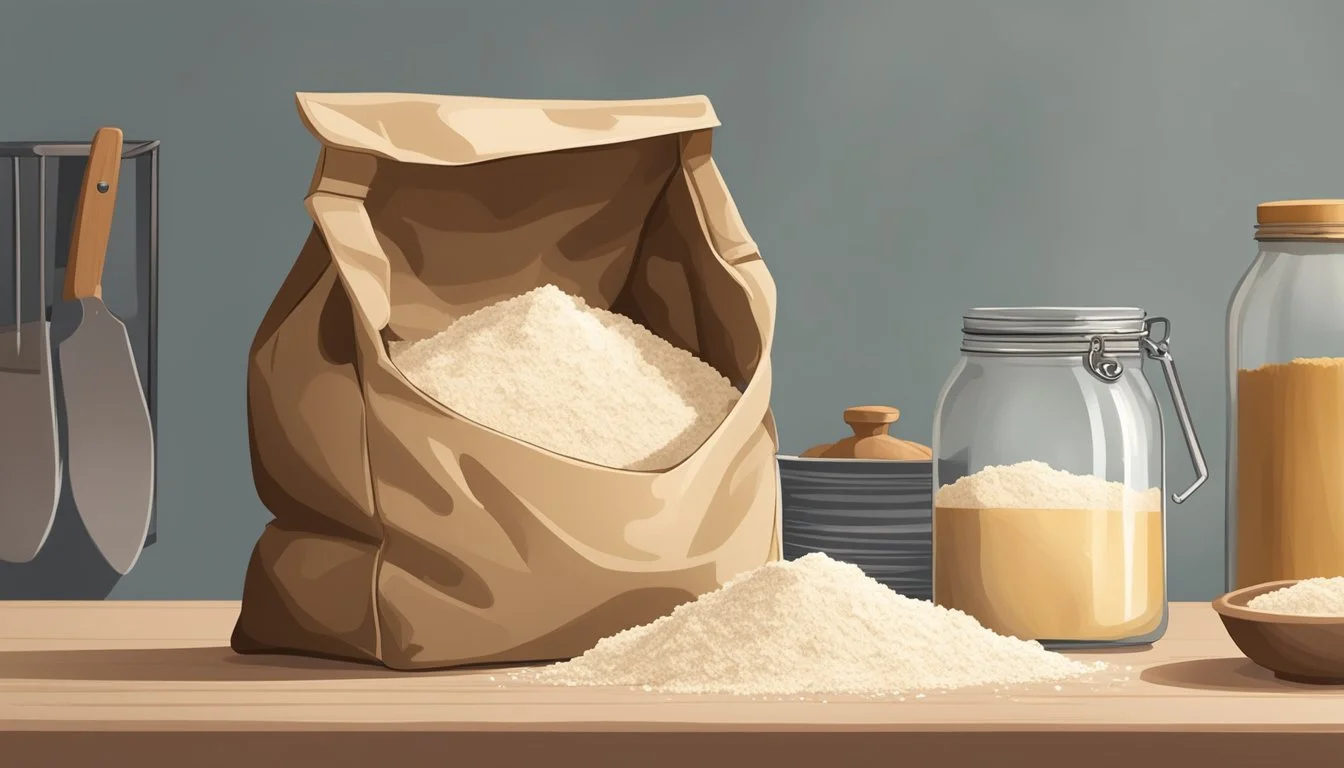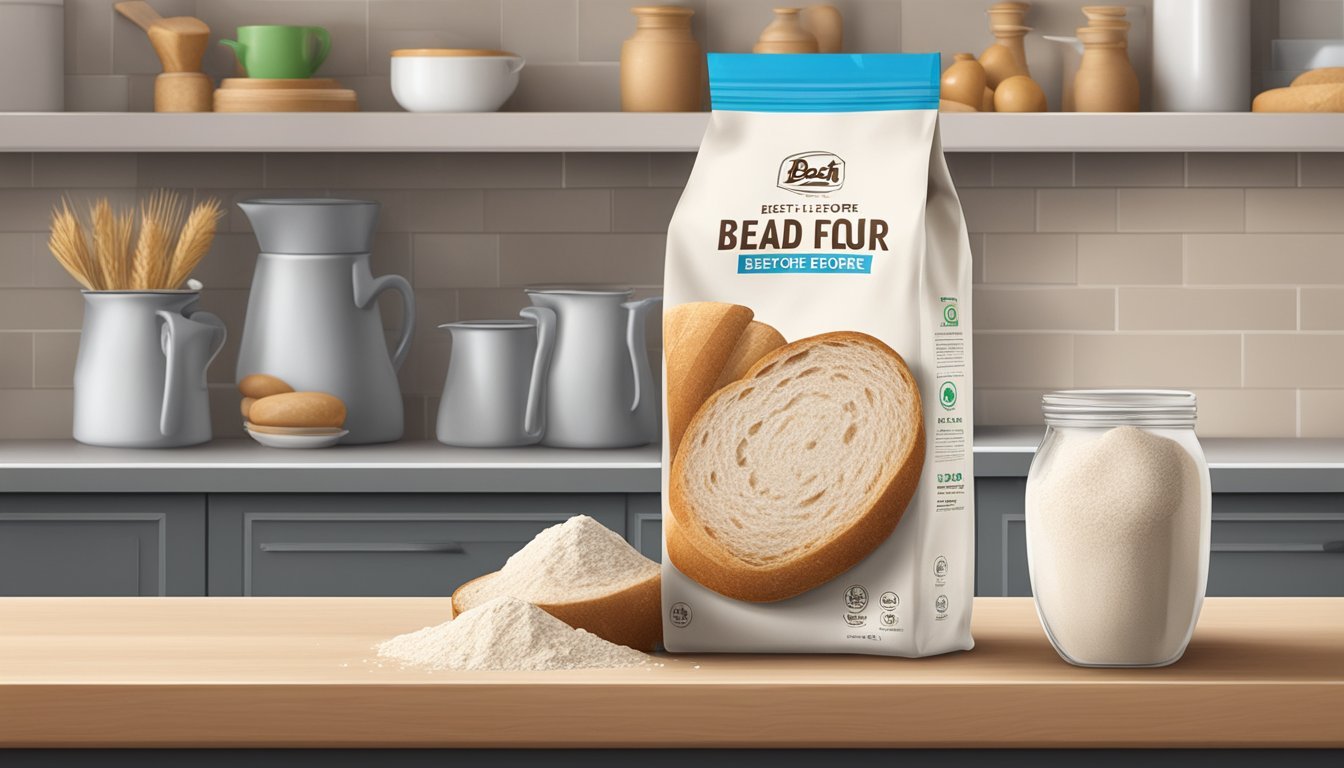How Long Does Bread Flour Last?
Shelf Life and Storage Tips
When it comes to storing bread (how long does bread last?) flour, the key determinant of its longevity is how it's stored. Properly stored bread flour can last up to two years, although the typical shelf life is around six to eight months. Factors that affect the shelf life of bread flour include exposure to air, moisture, light, and temperature. To maintain its quality for as long as possible, bread flour should be kept in a cool, dry place away from direct sunlight.
Determining whether bread flour has gone bad involves assessing its appearance, texture, and smell. Fresh bread flour should be white or cream-colored and have a smooth, dry texture. If the flour develops a musty smell, changes color, or shows signs of moisture such as clumping, these may indicate spoilage. For bakers and culinary enthusiasts, knowing how to assess the condition of bread flour is crucial for the success of their recipes and to ensure food safety.
Understanding Bread Flour
Bread flour is a type of flour specifically intended for baking bread. It is distinct from other types of flour due to its higher gluten content, usually around 12-14%. Gluten, a protein found in wheat, is responsible for the elasticity and rise of bread dough, which is why bread flour is preferred for yeast-leavened baked goods.
Bread flour is made from hard, high-protein varieties of wheat, which gives it the strength needed for bread to hold its shape and structure. The higher protein content in bread flour also means more gluten can be developed during kneading, leading to a chewier texture and a larger rise than would be achieved with all-purpose flour.
When selecting bread flour, bakers should consider the following characteristics:
Protein Content: Essential for gluten development and bread structure.
Shelf Life: When stored properly, it can last up to two years.
Storage Requirements: Should be kept in a cool, dark place in an airtight container to prevent spoilage and extend shelf life.
For long-term storage, bread flour may be frozen to further extend its usability. However, it should be brought to room temperature before use to avoid any issues with condensation and clumping.
Here's a brief comparison of bread flour to other common flours:
Type of Flour Protein Content Best Use Bread Flour 12-14% Bread All-Purpose 8-11% General baking Cake Flour 6-8% Tender cakes and pastries Whole Wheat 14% Dense, hearty breads
Understanding these traits ensures that bakers can select the right flour for their baking needs and store it appropriately to maintain its quality over time.
Shelf Life Fundamentals
Bread flour's longevity primarily depends on storage conditions and flour type. These two factors are crucial in determining how long it can retain its quality before use.
Determining Freshness
One can assess the freshness of bread flour by checking its best-by date, though it's not an absolute indicator of spoilage. Flour that is stored properly may remain usable past this date. Indicators of stale flour include a rancid smell, discoloration, or the presence of pests. A straightforward way to test flour for freshness is to observe its smell and texture: it should have a neutral odor and be free of clumps or moisture.
Shelf Life Variations by Flour Type
The shelf life of bread flour varies by type:
White Flour (e.g., All-Purpose, Bread Flour): Usually lasts 3-8 months at room temperature but can extend up to two years if stored in an airtight container in a cool, dry place.
Whole Wheat Flour (how long does whole wheat flour last?): Has a shorter shelf life due to its oil content; it typically lasts up to six months on a pantry shelf or can last up to eight months when refrigerated immediately after opening.
Specialty Flours (e.g., Gluten-Free, Nut Flours): Often have different shelf lives and usually benefit from refrigeration or freezer storage to extend their usability.
For optimal storage, bread flour should be kept in an airtight container to protect against moisture and pests regardless of the flour type. Storage temperatures should be stable and cool to maximize the shelf life.
Optimal Storage Conditions
Proper storage is crucial for maximizing bread flour's shelf life. Bread flour stays fresh when isolated from air and moisture, contained within an airtight environment, and kept at a consistent temperature. Implementing these optimal conditions helps maintain the flour's quality over time.
The Role of Air and Moisture
Exposure to air and moisture accelerates the degradation of bread flour's quality. Oxygen and humidity can introduce contaminants and promote the growth of pests or mold. Storing flour in a pantry that is free from fluctuating humidity levels is essential to preserving its freshness and extending its shelf life.
Airtight Container Benefits
Using an airtight container is instrumental for protecting bread flour from stale air and moisture. A well-sealed container prevents the influx of oxygen and unwanted odors, as well as moisture intrusion. Containers can be made of various materials such as plastic, glass, metal, or silicone, as long as they provide an impermeable seal.
Temperature Impact on Shelf Life
Bread flour should be stored in a cool, dark place to slow down the natural oxidation process and prevent rancidity. A consistent temperature, ideally below 75°F (24°C), helps to maintain the flour's integrity. Fluctuating temperatures can lead to condensation, further increasing the risk of spoilage due to moisture.
Signs of Spoilage
When it comes to bread flour, certain signs of spoilage are not to be overlooked. They ensure the safety and quality of the flour for baking purposes.
Visual Indicators
One should examine the color of the flour. It should maintain a uniform, off-white hue. Discoloration or the presence of small specks may suggest contamination or the growth of mold, which indicates spoilage.
Change in Smell
Flour typically has a pleasant, slightly nutty aroma. Any sour or off odors are a clear warning; they suggest that the flour may be rancid or has been exposed to moisture and is no longer good for consumption.
Texture and Consistency
The texture of fresh flour should be powdery and loose. If the flour feels lumpy, damp, or has hardened, this suggests that moisture has affected the product, leading to the potential for mold growth and spoilage.
Safety Concerns
Proper identification of contaminated bread flour and awareness of the potential health risks of consuming spoiled flour are paramount for food safety. These concerns are specifically tied to the presence of pests and the potential for mycotoxin production.
Identifying Contamination
Contaminated bread flour can harbor pests such as bugs, weevils, and mites. These pests are typically visible to the naked eye. Indicators of contamination include:
Live or dead insects in the flour
Small holes or webs, suggesting pest activity
Unpleasant odors indicating spoilage
Regular inspection of flour, especially before use, is recommended to catch these signs early.
Health Risks of Consuming Spoiled Flour
Consumption of spoiled flour can lead to significant health problems. Contaminated flour may contain mycotoxins, which are toxic compounds produced by certain types of mold. General symptoms that may arise include:
Vomiting
Diarrhea
These symptoms reflect the body's reaction to toxic substances or food-borne pathogens present in spoiled flour. In addition to immediate symptoms, long-term exposure to mycotoxins can lead to chronic illnesses. For these reasons, maintaining food safety standards by checking for spoilage and proper storage of bread flour is crucial.
Longevity Enhancement Techniques
The shelf life of bread flour can be significantly extended by adopting appropriate storage techniques. These enhancements inhibit spoilage and maintain the flour's freshness and baking quality over time.
Refrigeration and Freezing Options
Storing bread flour in a refrigerator or freezer protects it from temperature fluctuations and potential infestations, which can degrade its quality. In the refrigerator, bread flour can maintain its freshness for several months. For longer-term storage, placing flour in an airtight container and storing it in the freezer can extend its shelf life up to a year or more. Ensure the container is moisture-proof to prevent clumping.
Refrigerator: Up to 6 months for optimal freshness
Freezer:
Airtight container: 1 year or more
Utilizing Oxygen Absorbers
Oxygen absorbers can greatly enhance the shelf life of bread flour by removing oxygen that contributes to oxidation and spoilage. These should be placed in the storage container with the flour. By limiting oxidation, the flour's taste and texture are preserved over extended periods.
Oxygen Absorbers: Help prevent spoilage and extend shelf life
By adhering to these techniques, individuals can ensure that their bread flour remains in the best possible condition for use when needed.
Utilization of Expired Flour
When bread flour surpasses its expiration date, it doesn't necessarily mean it's unfit for any use. Assessing its current state and considering alternative uses can often salvage the expired product for different non-baking applications.
Assessing Usability
Firstly, one should thoroughly examine the expired flour for signs of deterioration before completely discarding it. Signs to look for include an unpleasant odor, discoloration, or the presence of bugs—all indicators that the flour should not be used. If the flour appears unchanged, it has likely maintained its key properties and could still be employed in certain recipes that don't hinge on optimal leavening and texture.
Alternative Uses
Secondly, if the expired bread flour has only slightly deteriorated but isn't fresh enough for traditional baking, one might consider alternative uses:
Thickening Agent: Flour can serve as a thickener for sauces and soups.
Craft Materials: It can be mixed with water to create homemade glue or paste for crafts.
Cleaning Agent: Mixed with water, it can help clean and polish surfaces by absorbing oil.
One should always exercise caution and rely on their own discretion when determining the final use of expired baking ingredients.
Types of Flour and Their Shelf Lives
Flour is an essential ingredient in baking, but not all flours are created equal. Their shelf lives can vary significantly depending on the type. Here, we analyze three main categories: whole grain flours, white and refined flours, and specialty and nut flours.
Whole Grain Flours
Whole grain flours, like whole-wheat flour and buckwheat, contain the germ and bran, providing nutritional benefits but also making them more susceptible to spoilage. Typically, they last up to 6 months at room temperature. When refrigerated or frozen in airtight containers, their shelf life can extend up to a year.
Whole-Wheat Flour: Up to 6 months at room temperature, 1 year refrigerated
Amaranth, Buckwheat, Oat Flour: Similar shelf life to whole-wheat flour
White and Refined Flours
Refined flours have a longer shelf life due to the removal of the germ and bran. All-purpose flour, self-rising flour, and cake flour fall into this category.
All-Purpose Flour: Up to one year at room temperature, longer if refrigerated
Self-Rising Flour: Up to 15 months under proper storage conditions
Cake Flour: Up to one year if stored in a cool, dry place
Storing these flours in an airtight container can prevent them from absorbing moisture and odors, which helps maintain their quality.
Specialty and Nut Flours
Specialty flours range from nut-based like almond flour to gluten-free options. These flours generally have a shorter shelf life due to their higher fat content.
Almond Flour: Up to 6 months at room temperature, longer if refrigerated or frozen
Coconut Flour: Up to 6 months, refrigeration recommended for prolonged freshness
Gluten-Free Flours: Varies, but often lasts longer when refrigerated
Storing nut flours in the refrigerator or freezer is essential to prevent them from becoming rancid.
Italicize specific types of flour for emphasis and bullet points are used for clarity on shelf life per flour type.
Frequently Asked Questions
How long does bread flour last?
Unopened bread flour typically lasts up to two years when stored in a cool, dry place. Once opened, it is best used within six months to a year.
What is the best way to store bread flour?
To extend the shelf life of bread flour, it should be kept in a tightly sealed container in a cool, dry area away from direct sunlight. Storing in the refrigerator or freezer can also preserve quality for longer periods.
Does the presence of preservatives affect the flour's shelf life?
Bread flour typically doesn't contain preservatives. Its shelf life is dependent on proper storage conditions rather than additives.
Is there a difference in shelf life between various types of flour?
Yes, whole grain flours like whole wheat, barley berries, or groats contain natural oils and can spoil faster than bread flour, which is milled from hard wheat. For instance, brown rice flour (how long does rice flour last?), potato flour (how long does potato flour last?), or oat flours may have a shorter shelf life due to higher oil content.
What are signs of flour being out of date or spoiled?
A rancid smell
Clumps or a change in texture
The presence of pantry pests, such as beetles
Does the quality of flour degrade over time?
Quality can degrade with time, affecting the protein content crucial for bread structure, even when it doesn't smell or taste bad. For optimal quality, use flour according to the USDA guidelines on shelf life and packaging dates.
How can one tell if flour is no longer good to use?
If in doubt, it's best to go by the appearance, smell, and the date indicated on the packaging. Roxana and other industry experts suggest that off smells or tastes are telltale signs that flour has gone bad.
Conclusion
Bread flour, known for its high protein content and its importance in baking, has a varying shelf life depending on storage conditions. Stored properly in a cool, dry place, unopened bread flour can last up to six months to two years. Once opened, bread flour should ideally be used within six months to maintain its best quality.
For longer-term storage, placing the flour in an airtight container and refrigerating or freezing can extend its usability. In the freezer, bread flour may last up to six months beyond its typical pantry shelf life.
It is crucial to be aware of signs of spoilage, such as an off smell or presence of pests. Should these signs appear, the flour should be discarded. Maintaining an organized pantry with labelled dates can aid in using flours before they deteriorate.
In summary, diligent storage practices ensure bread flour remains a reliable ingredient in one's baking repertoire.










